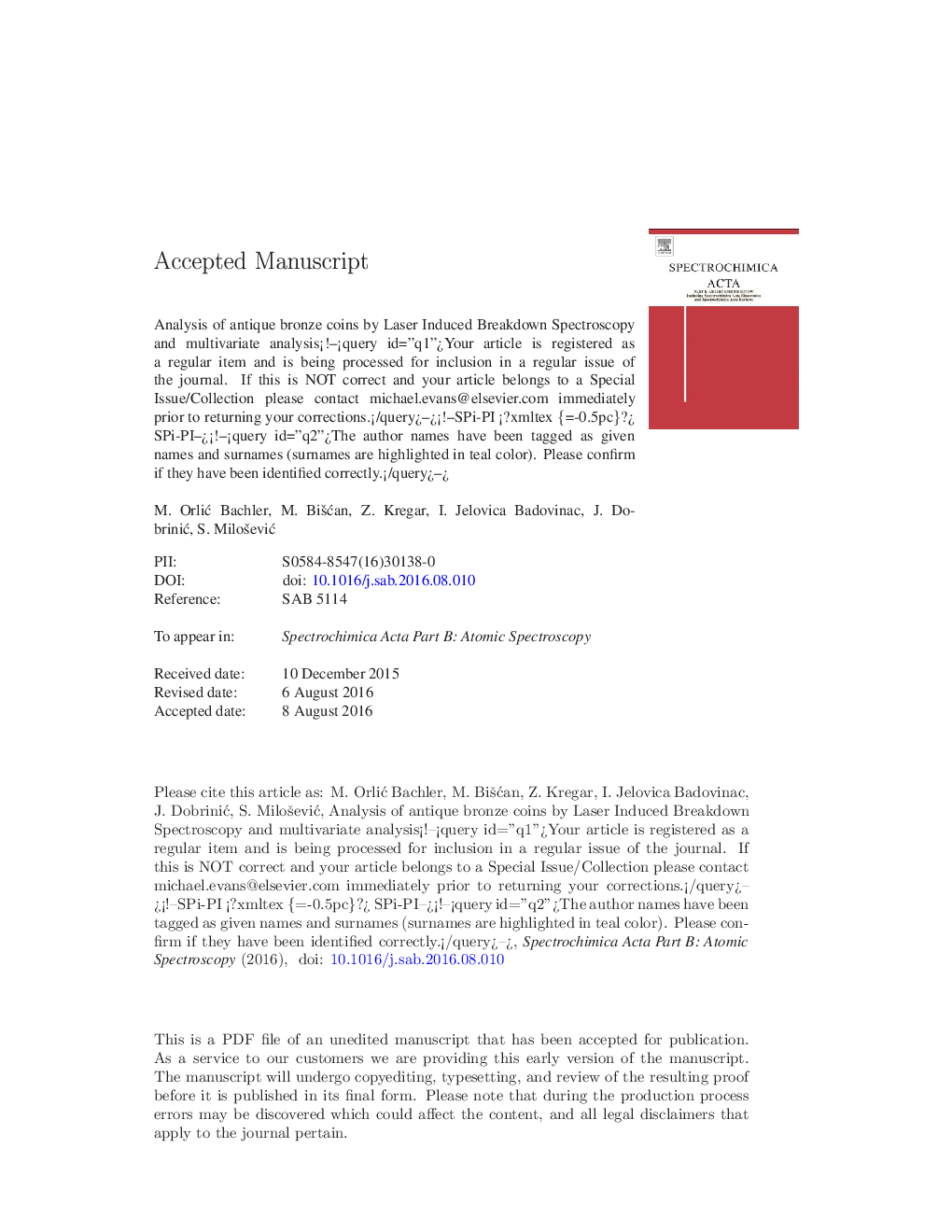| Article ID | Journal | Published Year | Pages | File Type |
|---|---|---|---|---|
| 7674028 | Spectrochimica Acta Part B: Atomic Spectroscopy | 2016 | 21 Pages |
Abstract
This work presents a feasibility study of applying the Principal Component Analysis (PCA) to data obtained by Laser-Induced Breakdown Spectroscopy (LIBS) with the aim of determining correlation between different samples. The samples were antique bronze coins coated in silver (follis) dated in the Roman Empire period and were made during different rulers in different mints. While raw LIBS data revealed that in the period from the year 286 to 383Â CE content of silver was constantly decreasing, the PCA showed that the samples can be somewhat grouped together based on their place of origin, which could be a useful hint when analysing unknown samples. It was also found that PCA can help in discriminating spectra corresponding to ablation from the surface and from the bulk. Furthermore, Partial Least Squares method (PLS) was used to obtain, based on a set of samples with known composition, an estimation of relative copper concentration in studied ancient coins. This analysis showed that copper concentration in surface layers ranged from 83% to 90%.
Related Topics
Physical Sciences and Engineering
Chemistry
Analytical Chemistry
Authors
M. OrliÄ Bachler, M. BiÅ¡Äan, Z. Kregar, I. Jelovica Badovinac, J. DobriniÄ, S. MiloÅ¡eviÄ,
